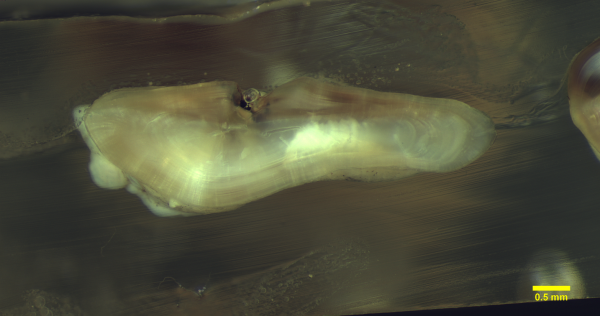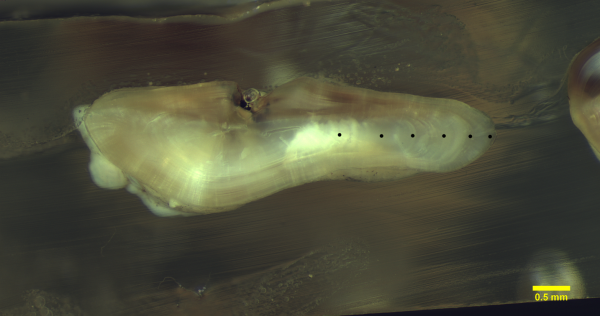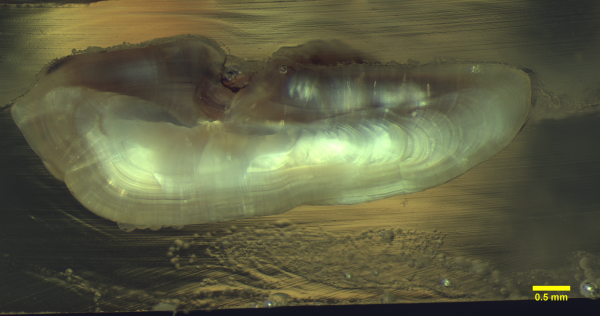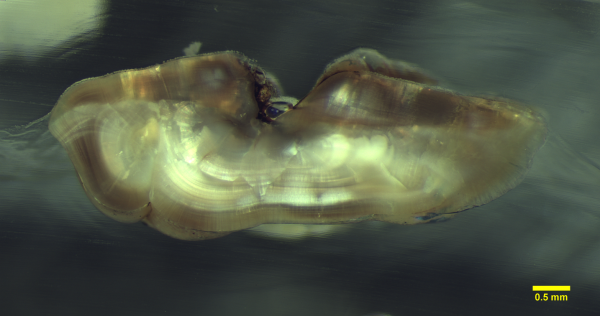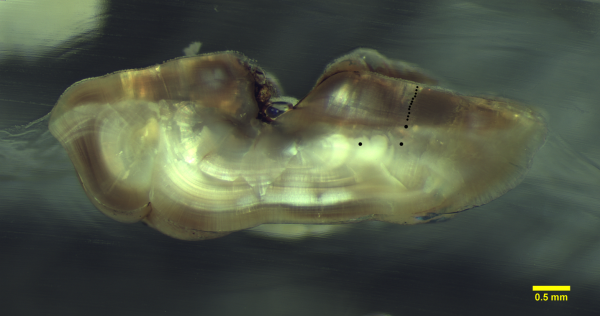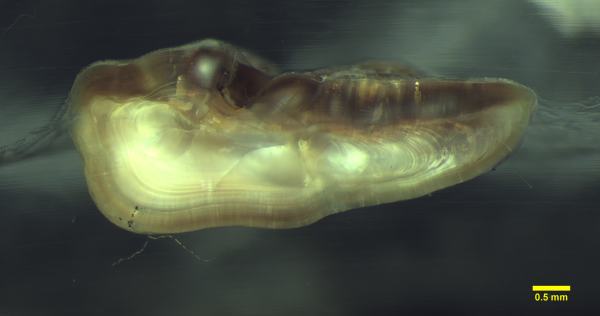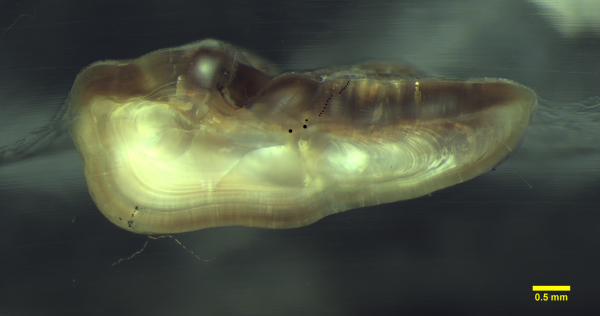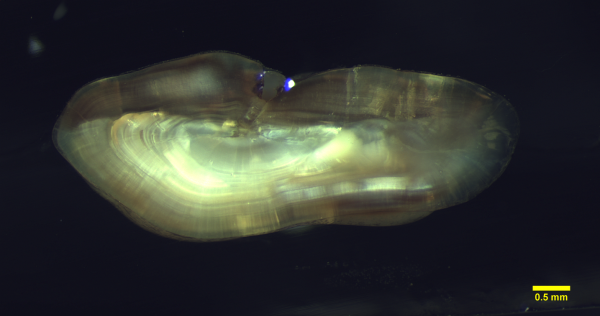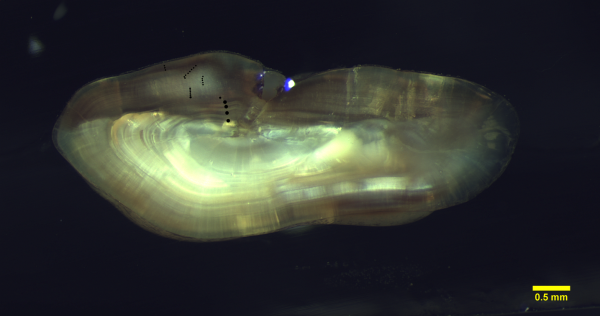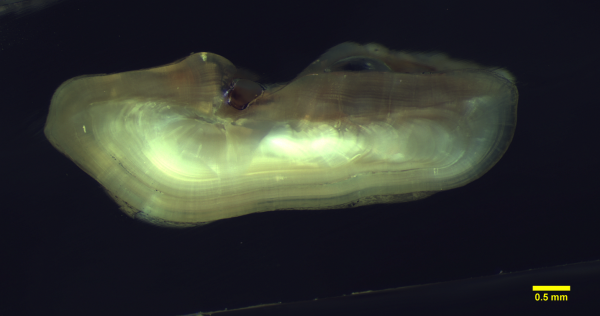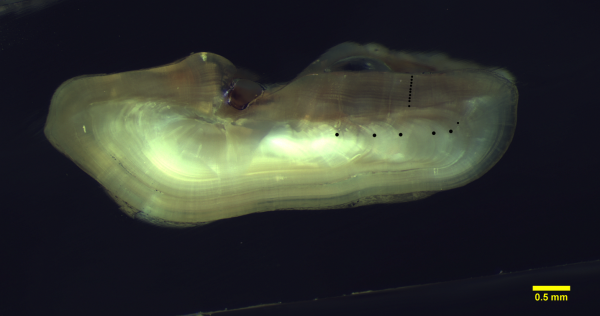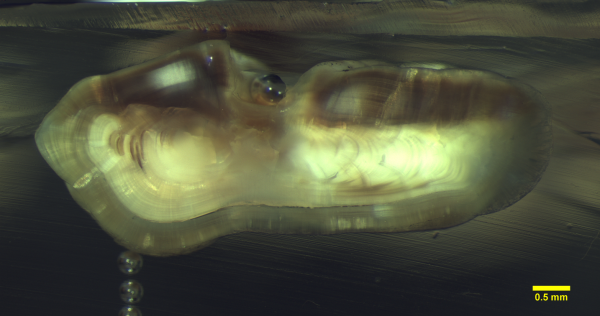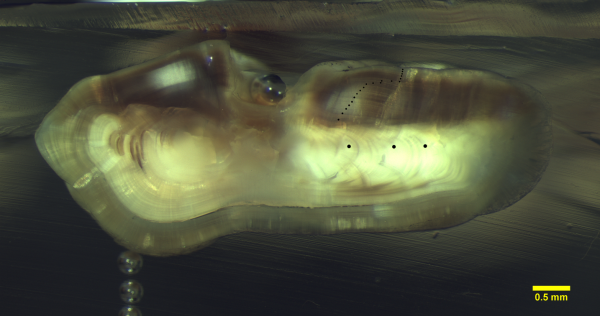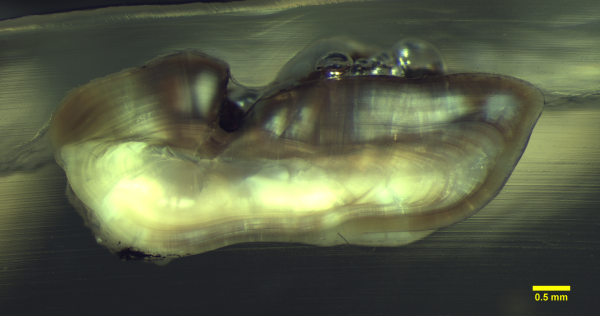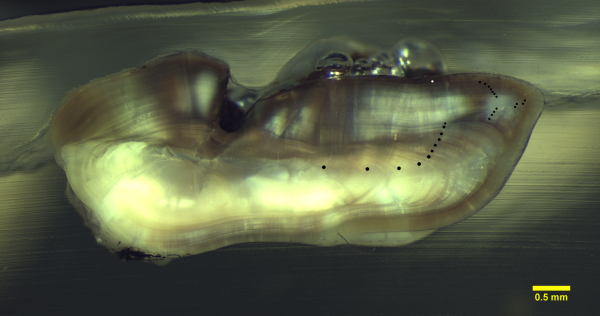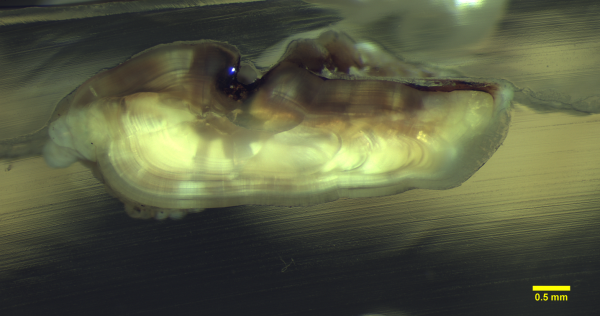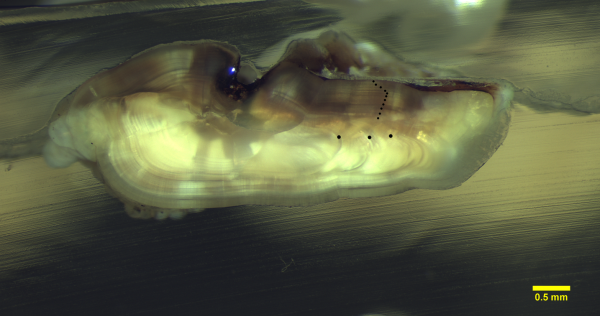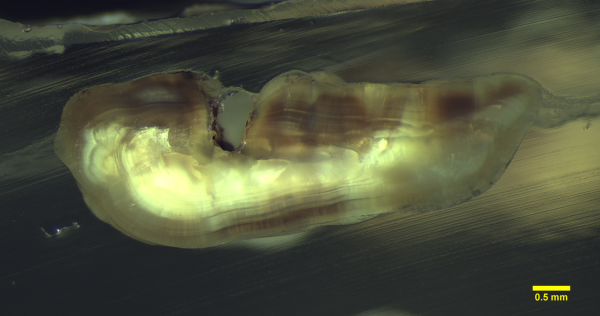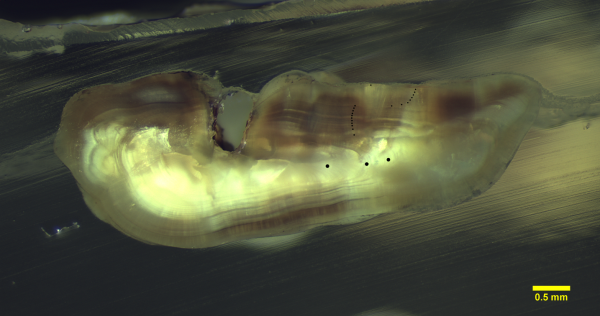The otoliths (ear bones) of fish function rather like the middle ear of humans in maintaining balance. They are made up of a complex of protein and calcium carbonate that are laid down at different rates in a process and leave alternating opaque and translucent bands in the otolith, just like the growth rings in a tree. So, just like a tree the age of a fish can be determined by counting the rings in the otoliths.
The age of a fish is a critical input into the stock assessment process for both Patagonian and Antarctic toothfish (Dissostichus eleginoides and D. mawsoni). In order to use toothfish age data from different laboratories in the same stock assessment, it is essential to minimise any biases due to inter-laboratory differences in otolith preparation techniques and ageing practices.
CCAMLR has developed this repository of images of aged otoliths to allow learning and inter-calibration of ageing approaches. Otoliths can be viewed either with or without the age displayed to allow comparison trials between readers.



